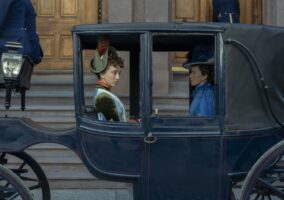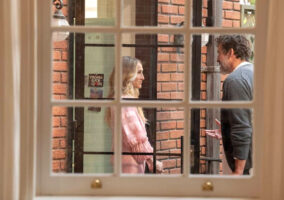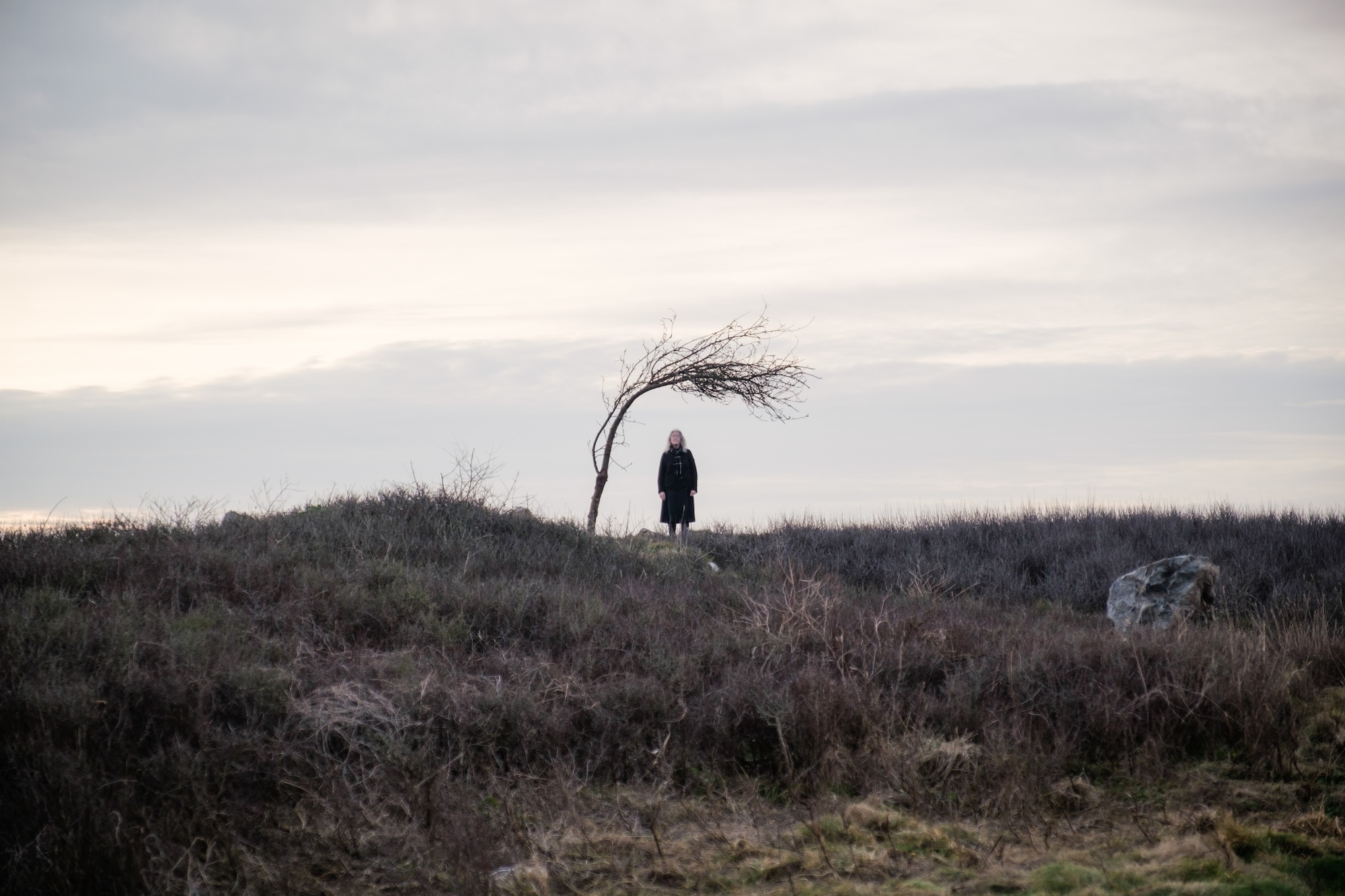
We’ll admit right off the bat that we were about two-thirds of our way into this episode when we reluctantly admitted that we were hating it. It seemed too early in Fifteen’s run to have a nearly Doctor-less episode and we weren’t convinced that Millie Gibson had what it took to carry a whole episode solo, let alone one that required her to age herself up over two decades. It also seemed obvious by that point that we were not likely to get much in the way of an explanation as to what was happening. But we never watch an episode just once if we’re reviewing it and we knew that producer-writer Russell T Davies had already boasted that this episode was one of the best things he’s ever written, so as soon as the end credits rolled, we recalibrated our settings, reset to zero, and went through it a second time with eyes as fresh as we could make them. And hoo boy, do you ever have to suspend your expectations of a Doctor Who episode in order to get into this one.
There’s a certain sense of grandiosity conveyed when you quote yourself to make a point, but in full humility, we offer the following completely obvious observation from our season premiere recap because it seems more than relevant here: “Calling it magic doesn’t change much about the type of stories its telling, but it does free up the show from having to work too hard to explain anything, which Davies tends to hate to do.” But we’d also add to that the other completely obvious observation we made a couple of weeks back: “Davies is good at seeding nearly nonsensical hints throughout an entire season and paying them off rather well.” On first watch, there’s much to be annoyed about regarding the lack of clarity, but on second watch, we think it’s somewhat obvious that this is something of a fulcrum episode for this season; a narrative mid-point that takes what we know about Ruby and then sprinkles in a whole bunch of other stuff that may or may not seem relevant as her story further unfolds. Or to repeat what we said at the start of the season, Davies is back on his Bad Wolf bullshit.
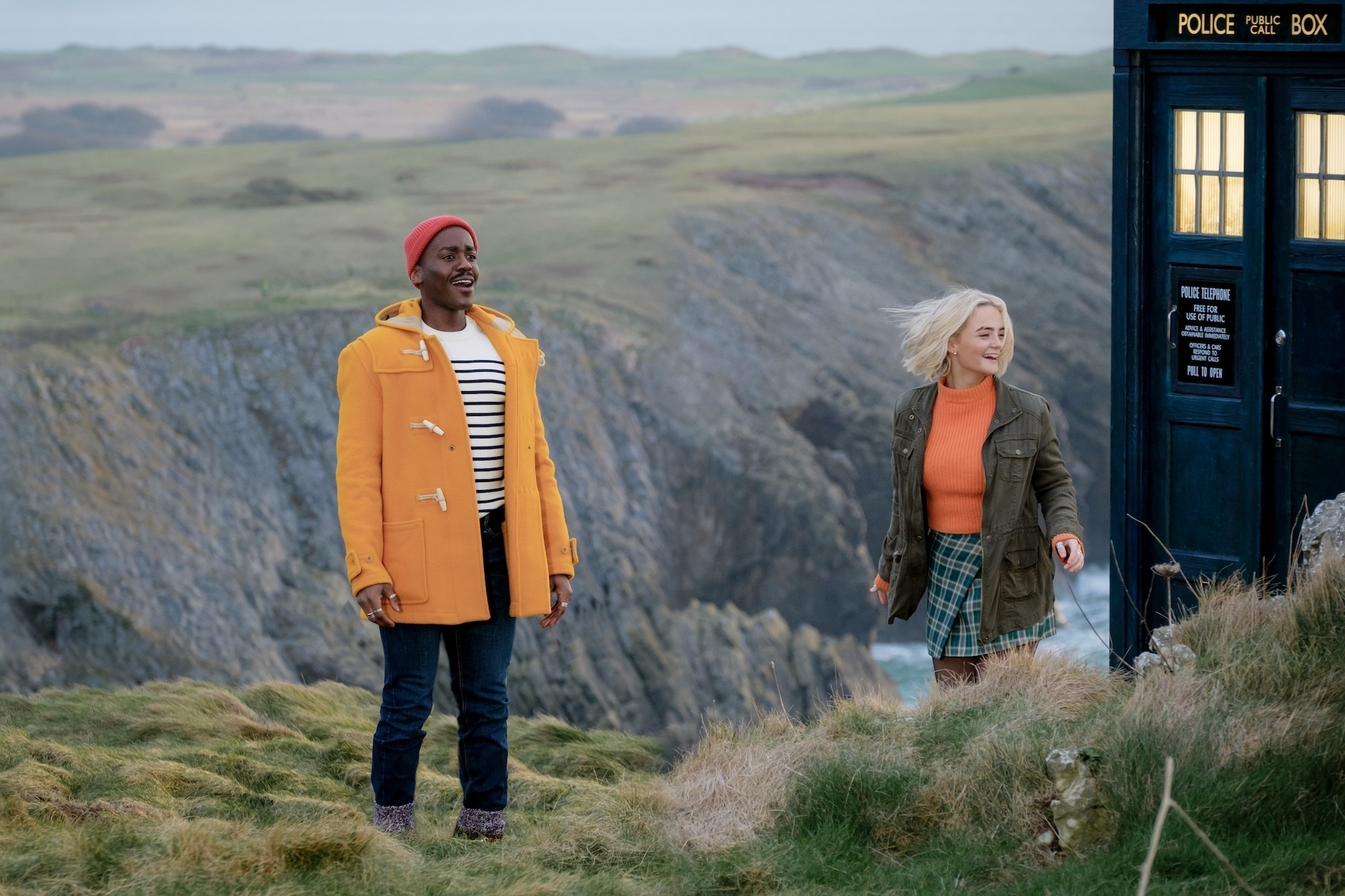
But before we get into the narrative, we’ll note that many are calling this episode a new masterpiece and we’re inclined to agree that its reputation is only going to improve over time. Putting aside whatever frustrations came from watching it the first time, it was a gorgeously evocative piece of folk horror for its first 25 minutes or so. Some of the earliest scenes, especially on the cliffs and in the pub, were some of the most beautifully shot and staged in the show’s modern history. It was dreamy when it needed to be and bone-chillingly creepy a second later. The tonal shifts were skillfully handled. The Kate Lethbridge-Stewart scene went from a feeling of pleasant relief which slowly escalated to full-on horror and the shift was so subtle that we felt every second of Ruby’s escalating terror and frustration. We had doubts about Millie, but she was quite good throughout the episode.
On first watch, we thought that the lack of clarity and absence of the title character were the parts where the episode failed, but on second watch, it really was that two-thirds mark where it fell down for us; specifically the introduction of Roger ap Gwilliam (Aneurin Barnard), the villainous would-be Prime Minister. The series has taken a decidedly more political tone since Davies returned to it and as we said in previous recaps, we genuinely enjoy seeing a Doctor moving through a world more recognizably our own. But Davies already ran through an extended villainous Prime Minister storyline with John Simm’s Master getting elected as Harold Saxon and subsequently taking over the world. It seems on the surface that Davies wanted to show a more real-world version of political villainy this time around, but there’s something almost humorously simplistic about his “I want to sexually abuse women and nuke everything” take on it.
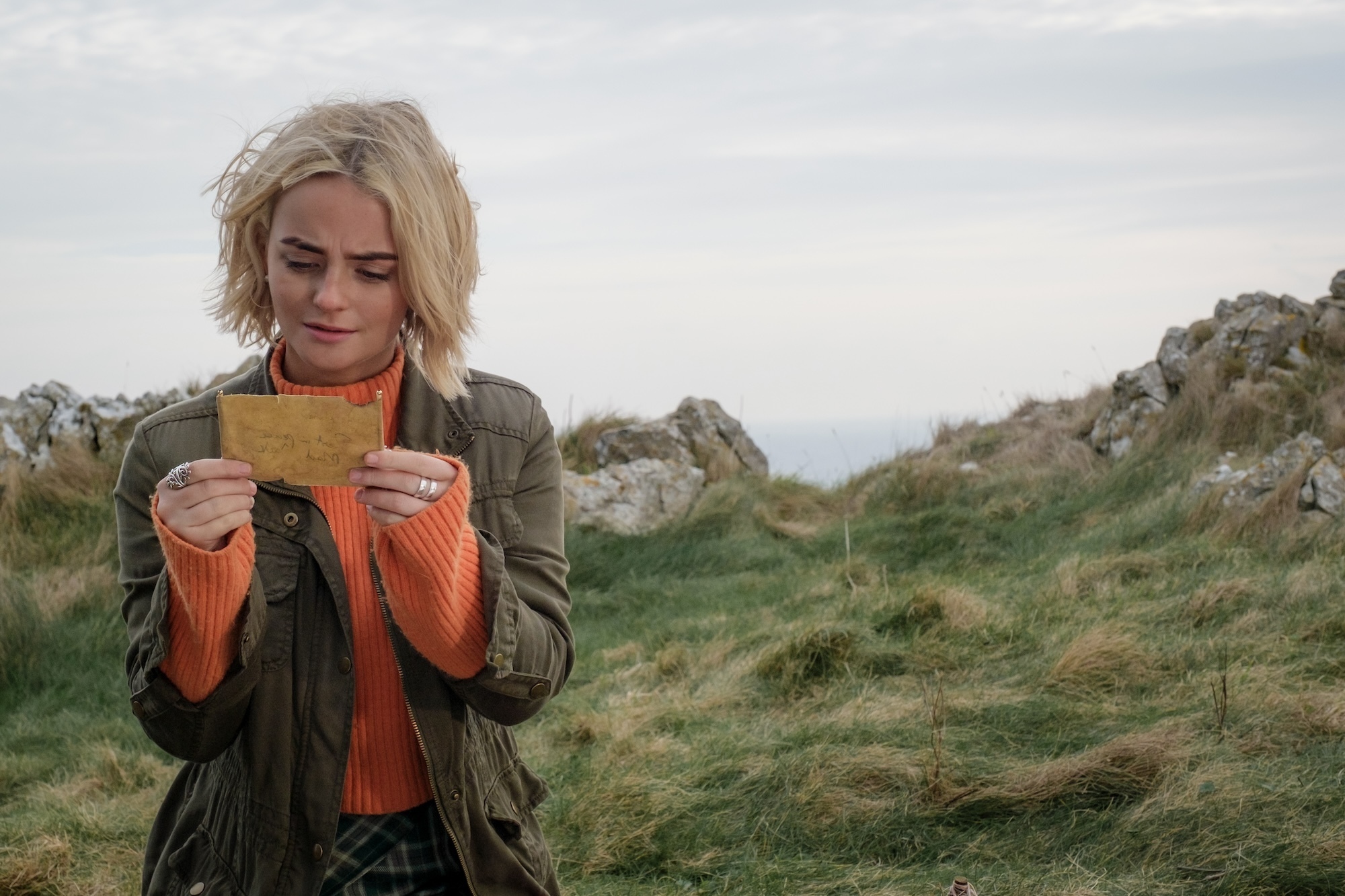
Also on first watch, we found the lack of explanation as to what the old woman was saying to people to make them turn on Ruby to be a major flaw in the story. But since we’re dealing with a magical universe, it probably doesn’t even matter. Thematically, it worked as a manifestation of Ruby’s darkest fears and deepest self-loathing. As she’s been presented up to now, there isn’t a thing you could say to Ruby’s mother to make her react the way she did, which means it’s not what the old lady said that caused them to turn on Ruby, it was simply magic. As Kate told her, this timeline seems suspended on her. Ruby’s fear of abandonment is the engine that drives this world. Reality bends to support it. The old lady may not have said anything to these people; she merely had to represent the idea that Ruby is as, the Maestro put it in episode two, a “very wrong” thing that must be abandoned. When faced with that magic, everyone abandoned her. There’s an old episode of Star Trek: The Next Generation (season four’s “Remember Me”) very similar in concept. Beverly Crusher gets stuck inside a bubble reality that conforms to her own fear of loneliness and one by one, everyone in that reality disappears as if they never existed. Much in the manner of that episode, how Ruby reacts to her greatest, deepest fear coming true – and it’s truly horrifying not just to see people leave her, but to run screaming from her in terror – is a way of letting us know who she truly is and what kind of character she has.
On second watch, however, we were still stuck wondering about things that either needed a bit more of an explanation or come off as outright plot holes. First, Ruby’s takedown of Mad Jack doesn’t conform to any of the logic of the story up to that point. Every person that encountered the old woman ran away from Ruby specifically. There’s no reason for her to think exposing the Prime Minister to the old woman would somehow get him to quit his political career and there’s nothing in the story to support that outcome. There is also, so far, no explanation or reason as to why Ruby, having evidently been turned into a time-traveling ghost, would spend her remaining existence ruining her own life, although it does tend to support the episode’s feeling of tragedy and depression. We can understand it thematically but not logically and we’re going to wrestle with those opposing perspectives for a while to see which comes out on top.
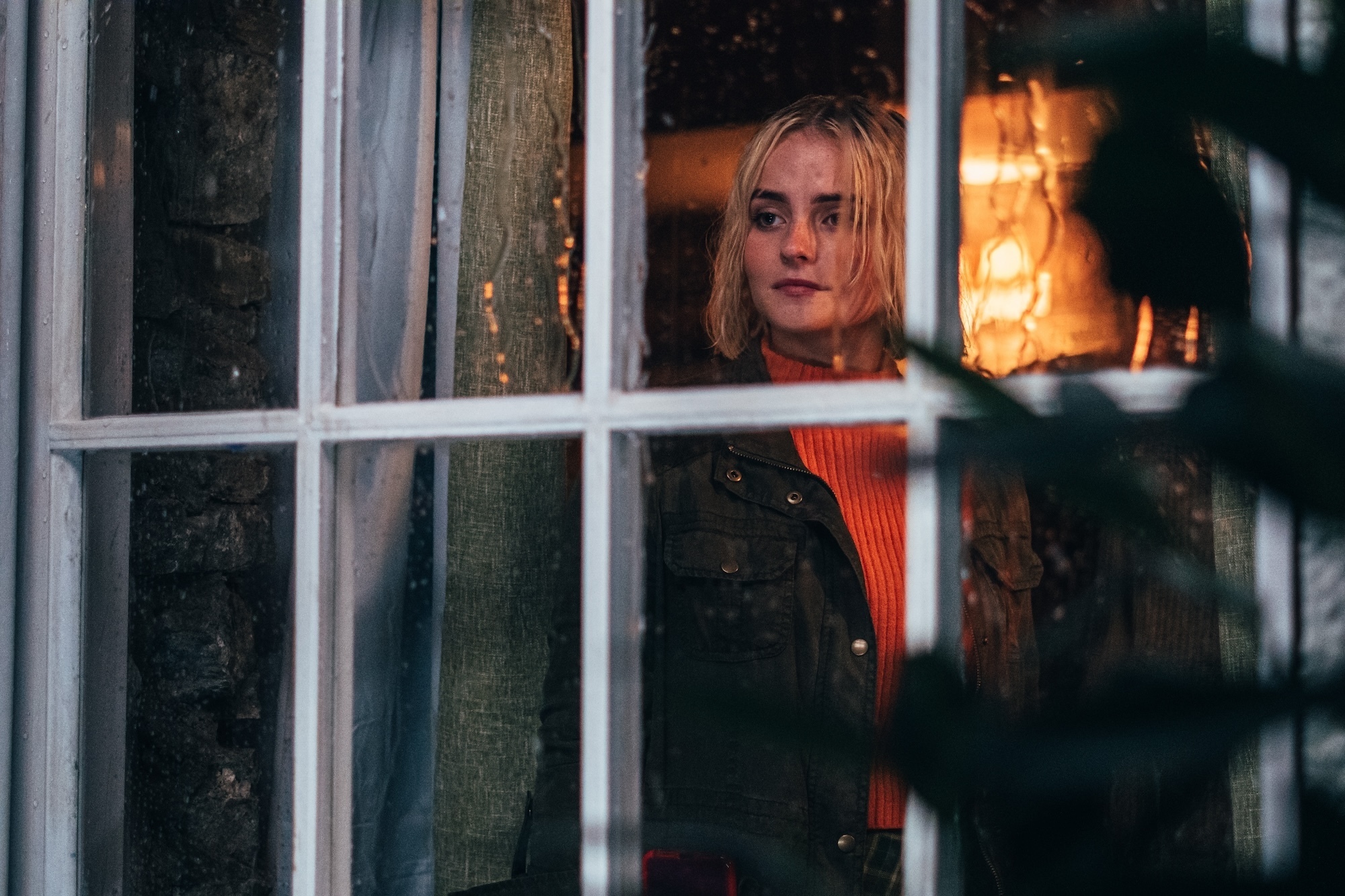
Having said all that, we reserve the right to withhold a further rating on the episode because we’re 99% sure that a lot was being set up for explanation later on. The first non reality TV recaps we wrote were devoted to LOST, to which we spent years theorizing about all of the signs and portents that wound up getting goofy or unsatisfying explanations, so we pretty much refuse to insist on anything here, but we think there are a few things of import to note or ponder.
First, while the TARDIS’ DNA scan revealed her to be human, we don’t think Ruby is an entirely normal representation of the species. There’s way too much unexplained phenomena surrounding her entire existence and in this episode, an entire alternate reality was created around her, bending to her psyche. We can accept never knowing who set the fairy circle or why, but it feels at least a little important that it referenced Mad Jack years before his appearance on the national scene. It also seems notable that the Doctor was the one who broke the circle, which means it makes sense that he would have been the one to suffer the consequences. We propose that the Doctor didn’t just disappear and he didn’t abandon Ruby like everyone else had, otherwise the TARDIS would have left with him. No, the Doctor died for his sin. Whatever happened to Ruby was less a consequence of breaking the circle and more a combination of factors that included the TARDIS’ perception filter, magic, and Ruby’s own unsolved existence. Note also that Ruby did not, in fact, prevent the rise of Mad Jack, because in the return to the slightly altered (the shot sequences are different, the woman appears at a different time and Ruby says she went to Wales three times instead of two) original timeline, the Doctor is still talking about Roger ap Gwilliam’s eventual rise to power.
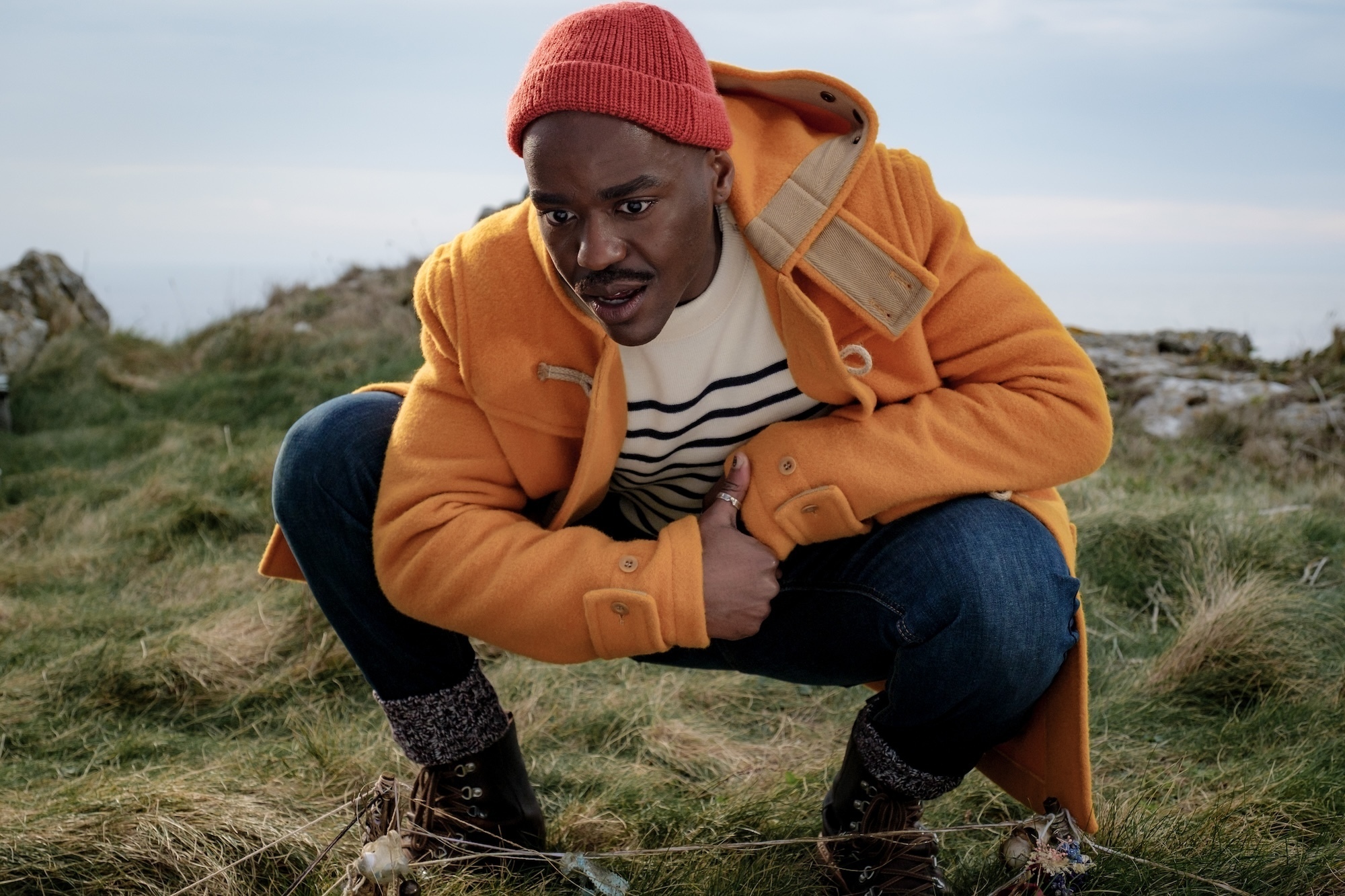
And as a final observation, this season has had such an overwhelming focus on elderly women as figures of mystery that, in the hopes we don’t sound flippant about it, we wondered if Davies had recently lost his mother. He hadn’t. She passed decades ago. But with Ruby’s grandmother Cherry, her mysterious neighbor Mrs. Flood (who made another appearance here), the ever-present Susan Twist (who also made another appearance), and the elderly version of Ruby in this alternate timeline, we can’t remember a time when the show employed so many actresses over seventy in central roles. It could just be a coincidence or a reflection of Davies’ own age, but at least three these old ladies have extremely mysterious backgrounds. It also seems notable that we never saw the face of the old woman stalking Ruby and we wonder if it’s because she doesn’t have Ruby’s old woman face.
To sum it up, if you hated this episode, we recommend a second watch with an open mind and a release of your expectations. We respected it a lot more in the second watch, and we’re pretty sure we’re going to love this episode when we revisit it again at the end of the season.
Friday Leftovers for the Week of May 19th, 2024 Next Post:
RUPAUL’S DRAG RACE ALL STARS: Snatch Game of Love
Please review our Community Guidelines before posting a comment. Thank you!

